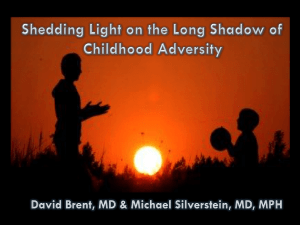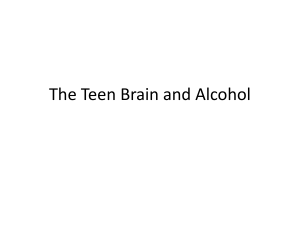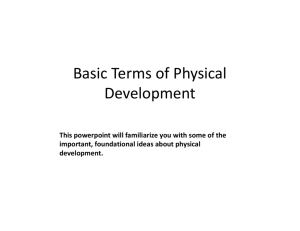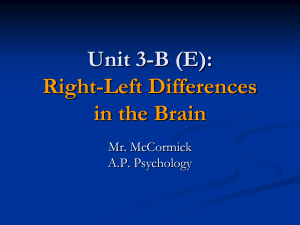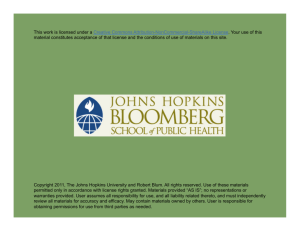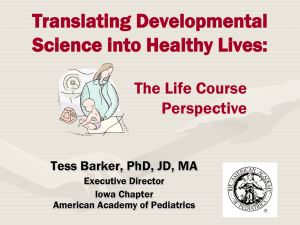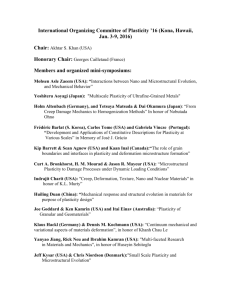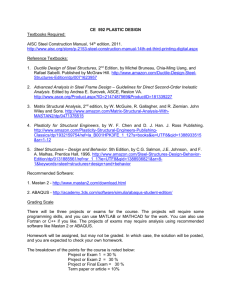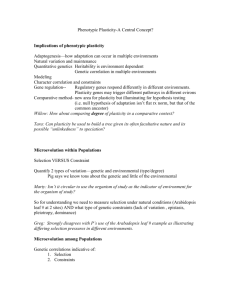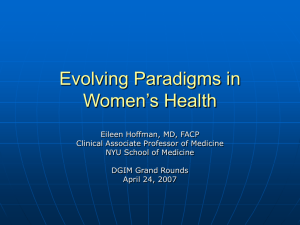Toxic Stress - American Academy of Pediatrics
advertisement
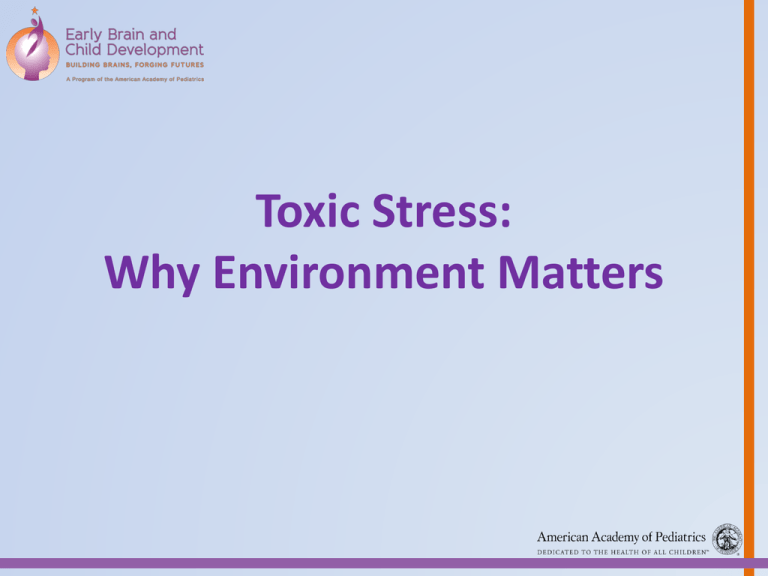
Toxic Stress: Why Environment Matters Objectives • Why does environment matter? –Defining adversity or stress –4 key concepts that help explain how environmentbrain interaction changes the brain • What can you do to change this for the better? –Using what we know about toxic stress to help promote healthy development Why does environment matter? Development is a dance between nurture and nature Experience Protective and Personal (versus Insecure and Impersonal) Brain Development Alterations in Brain Structure and Function Epigenetic Changes Behavior Alterations in the Way the Genetic Program is Read Adaptive or Healthy Coping Skills (vs. Maladaptive or Unhealthy Coping Skills) Source: AAP: Helping Foster And Adoptive Families Cope with Trauma. 2013. Seeing the Environment Through an Ecobiodevelopmental (EBD) Framework • Promotes understanding of the environment and brain development • Shows why early support is important • Highlights psychosocial stressors as every bit as biological as nutrition • Emphasizes the dimension of time How do you define adversity or stress? • Stress is not necessarily a bad thing • Based on the perception and reaction (objective physiologic responses): – Positive stress response – Tolerable stress response – Toxic stress response Source: National Scientific Council on the Developing Child Positive Stress Response • Brief, infrequent, mild to moderate intensity • Most normative childhood stress – 2 year-old stumbles while running – Beginning school or daycare • Social emotional buffers allow a return to baseline • Builds motivation and resiliency • Positive Stress is not the absence of stress Source: National Scientific Council on the Developing Child Tolerable Stress Response • Exposure to non-normative experiences – Death in family – Natural disaster • Social emotional buffers can provide protection and promote a return to baseline • A single major negative event does not necessarily mean long-lasting problems Source: National Scientific Council on the Developing Child Toxic Stress Response • Long lasting, unremitting stress, not a “single bad stressor” • Adverse child experiences – Abuse – Household dysfunction • • • • Insufficient social-emotional buffering Potentially permanent changes and long-term effects Epigenetics Brain architecture Source: National Scientific Council on the Developing Child “Social-emotional buffering is the primary factor distinguishing level of stress.” Andy Garner, MD AAP EBCD Leadership Work Group Chair Eco-Bio-Developmental Model of Human Health and Disease Biology Physiologic Adaptations and Disruptions The Basic Science of Pediatrics Life Course Science Ecology becomes biology, And together they drive development across the lifespan Key Concept 1 Childhood adversity has lifelong consequences Adverse Childhood Experiences (ACE) Study • One the largest studies to assess associations between childhood maltreatment and later health and well-being • Findings suggest that certain experiences are major risk factors for illnesses and poor quality of life Source: Centers for Disease Control and Prevention - http://www.cdc.gov/ace/ Adverse Childhood Experiences (ACE) Study Source: Centers for Disease Control and Prevention Key Concept 2 Epigenetics • Which genes are turned on/off, when and where • Ecology (environment/experiences) • Stress-induced changes in gene expression Parental Stress and Children’s Genes • Parents’ stress leaves lasting marks on childrens’ genes • Higher stress levels reported by mothers during their child’s first year correlated with methylation levels on 139 DNA sites in adolescents Source: Kobor, Child Development August 2011 Hippocampus Volume by Preschool Depression Severity and Maternal Support Luby J L et al. PNAS 2012;109:2854-2859 ©2012 by National Academy of Sciences Key Concept 3 Developmental Neuroscience • Brain architecture is experience-dependent • Ecology influences how brain architecture is formed and remodeled • Diminishing cellular plasticity limits remediation Plasticity • Plasticity refers to the brain’s unique ability to literally “rewire” itself in response to experience • Experience influences not only the foundational architecture, but the on-going connectivity and functionality • Two different types of plasticity… Plasticity • Synaptic Plasticity – Variation in the STRENGTH of individual connections – “a single person goes from a whisper to a shout” – Lifelong (how old dogs learn new tricks) • Cellular Plasticity – Variations in the NUMBER (or COUNT) of connections – “from one person shouting to a stadium shouting” – Declines dramatically with age (waning by age 5) Differential Maturation - The Brake – PFC (with some hippocampal help) Frontal lobes: Abstract thought, reasoning, judgment, planning, impulse and affect regulation, consequences Parietal Lobe: Integration of sensory data and movement Temporal lobe (outside): Processing sound and language Occipital Lobe: Visual processing Cerebellum: Smooth movements Coordination Limbic System (inside): Emotions and impulsivity + The Gas Pedal + Amygdala Brain Stem & Cranial Nerves: Vital functions Swallowing Early Stress CHILDHOOD TOXIC STRESS STRESS Hyper-responsive stress response; calm/coping Chronic “fight or flight;” cortisol / norepinephrine Changes in Brain Architecture Critical Concept 4 What can you do to make it better? Development is a dance between nature and nurture • What you can do: – Apply an ecobiodevelopmental framework – Recognize adverse psychosocial factors – Collaborate with families and social service providers Early connections form the foundation • What you can do: – Encourage social-emotional skills – Talk about the 5 Rs – Help families recognize social and developmental milestones Strategies to Improve Developmental Trajectories Developmental Progress “Healthy” Trajectory Health Services Pre-school Appropriate Discipline “At Risk” Trajectory Reading to child High quality ECE Anticipatory Guidance Language Stimulation “High risk” Trajectory Specialized services Parent Responsiveness Home visiting What will push children in red and yellow categories Late Preschool Late Infancy Late Toddler towards green? Birth 6 mo Early Infancy 12 mo 18 mo Early Toddler 24 mo 3 yrs Early Preschool 5 yrs Age Brain Plasticity Declines With Age • What you can do: – Work with families and child care providers to ensure that brain’s wiring is right the first time – Advocate for a public health approach to toxic stress – Help families to provide safe, stable relationships – Assist families in regulating stress CONCLUSION: It is easier to build strong children than to repair broken men. Frederick Douglass
